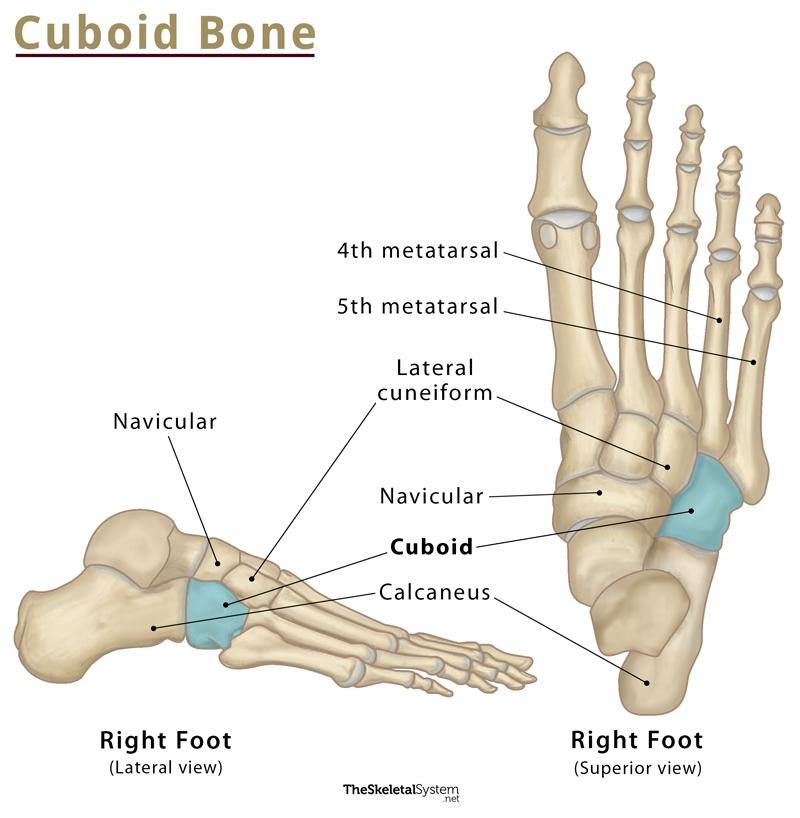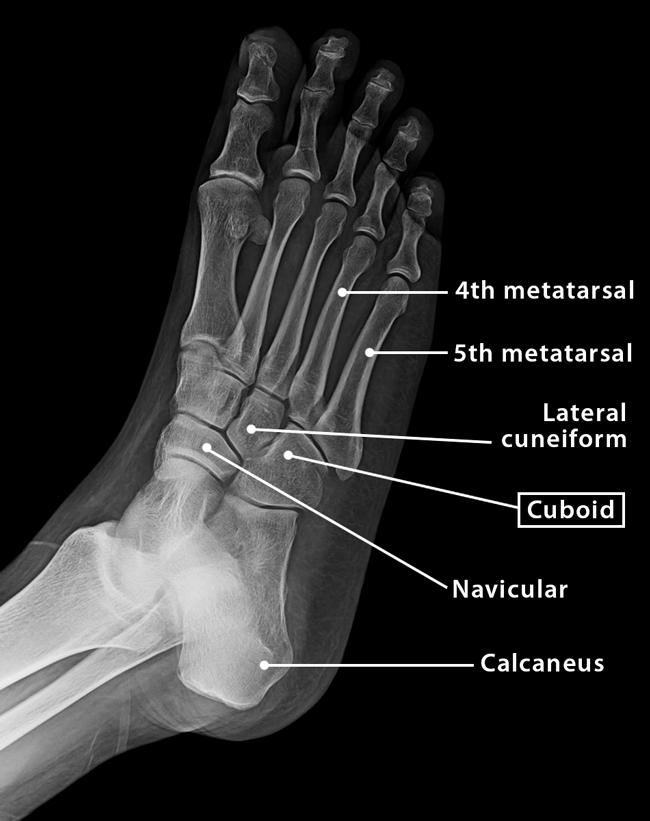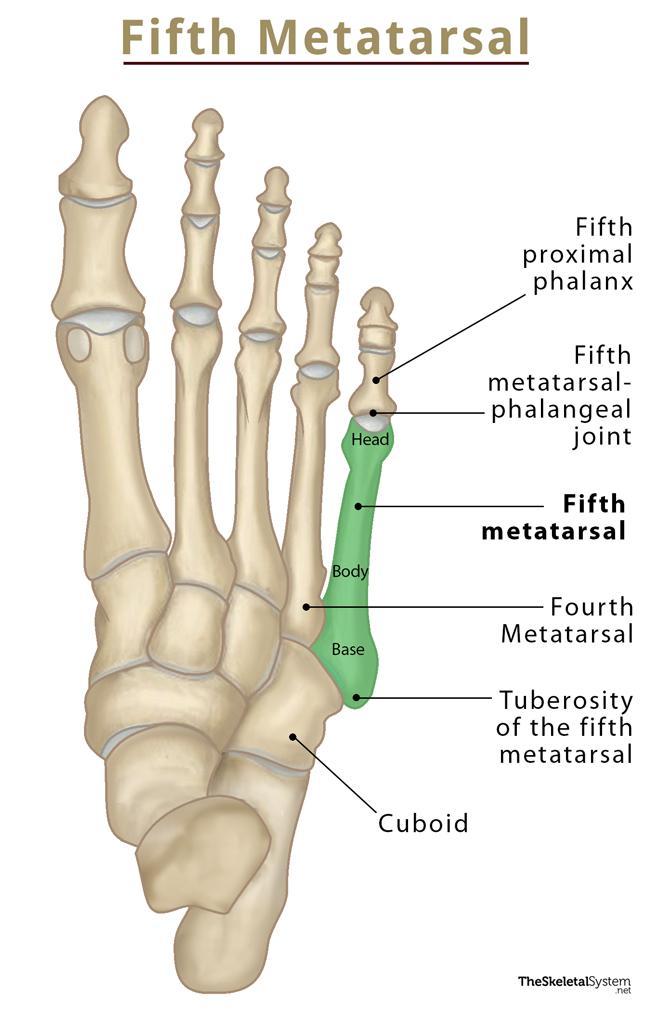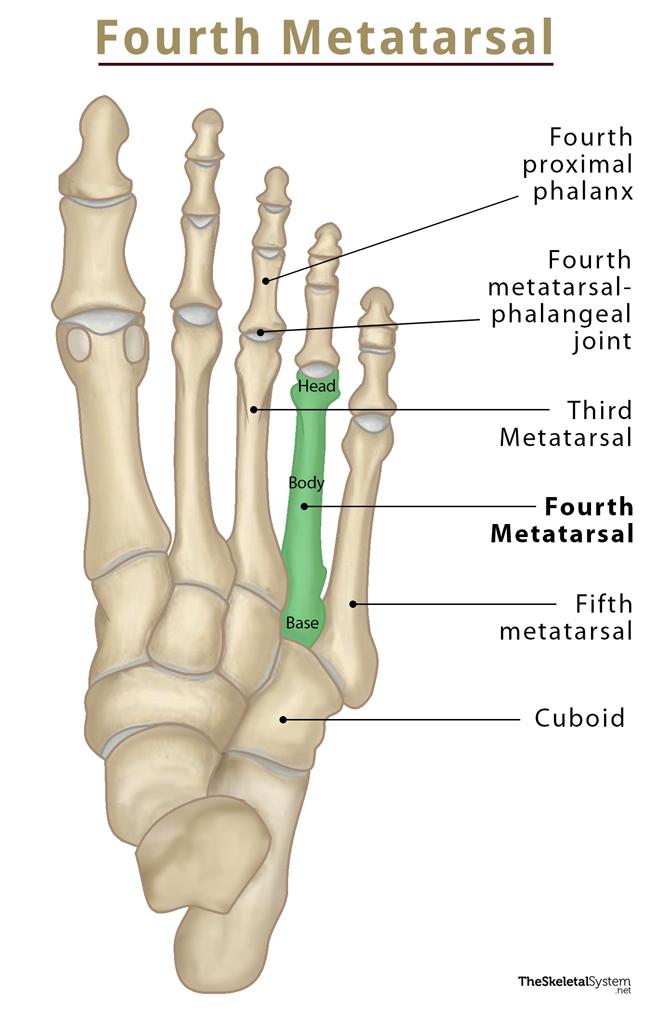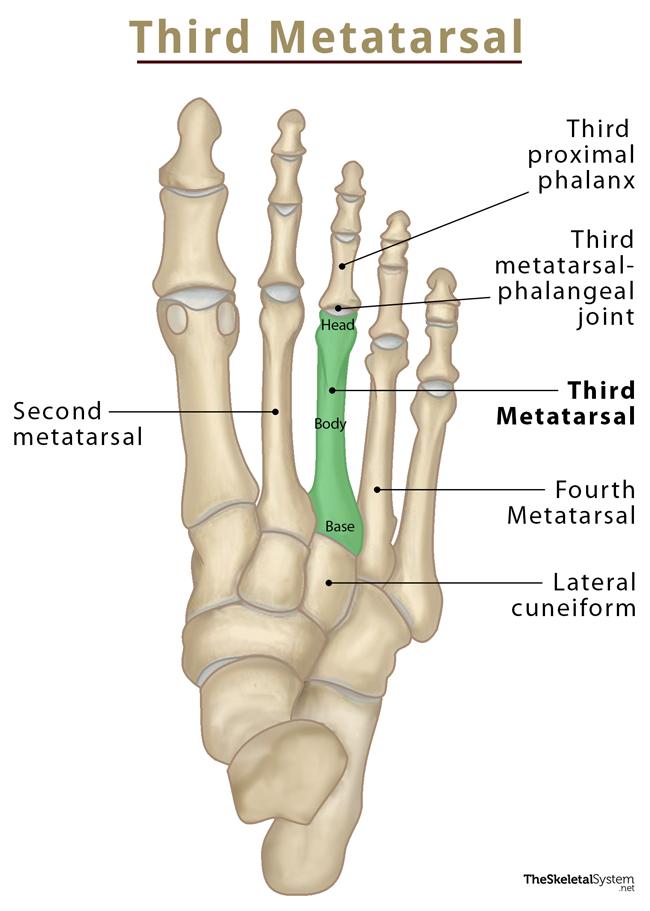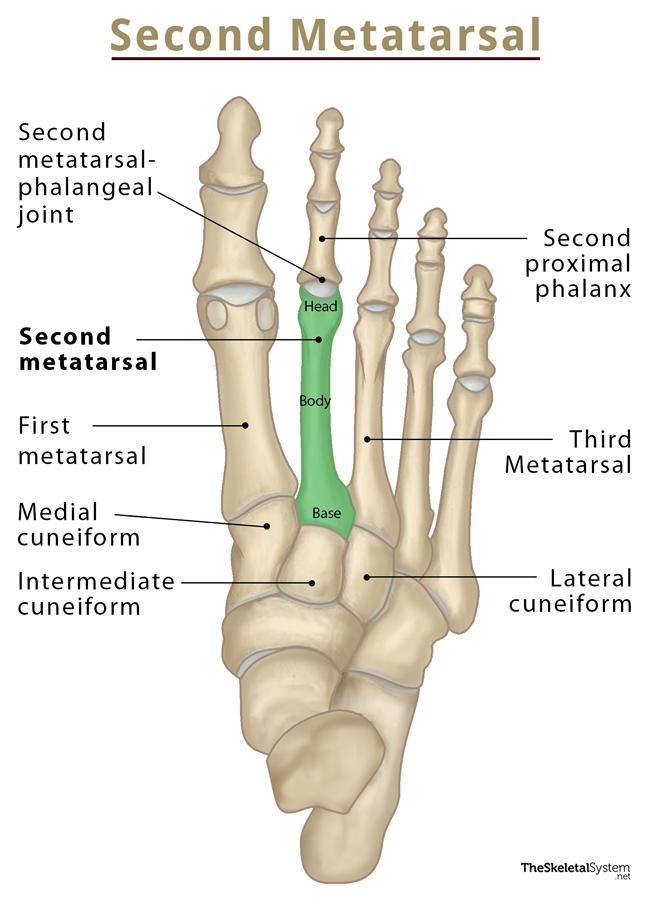Cuboid Bone
What is the Cuboid Bone
The cuboid is one of the seven tarsal bones of the midfoot. As the bone is cubical, it is named ‘cuboid’ bone. It is positioned most laterally in the distal row of the tarsus. It stabilizes and supports the lateral column of the foot.
Where is the Cuboid Located
The cuboid bone is located on the lateral aspect of the foot, anterior to the calcaneus, posterior to the fourth and fifth metatarsal, and next to the navicular and lateral cuneiform bones.
Cuboid Bone Facts
| Type | Short bone |
| Number in the human body | 2 (1 in each foot) |
| Articulates with | Calcaneus, navicular, lateral cuneiform, fourth and fifth metatarsal |
Functions
- Provide stability and support to the lateral column of the foot.
- Though the bone is not directly involved with weight-bearing, it dissipates a large amount of mechanical force while standing or walking, providing flexibility of the foot.
Structure and Anatomy of the Cuboid Bone in the Foot
As stated, the bone is roughly cubical, having six distinct surfaces: dorsal, plantar, lateral, medial, anterior, and posterior.
Dorsal Surface: It is flat and rough for the attachment of ligaments. It is directed upwards and laterally.
Plantar Surface: The inferior or plantar surface presents a prominence called the tuberosity of the cuboid. Also, it has a deep groove in its front, the peroneal sulcus, running obliquely towards the anterior and medial sides. The tendon of the peroneus longus passes through this groove and is bounded behind by a prominent ridge to which the long plantar ligament is attached.
Lateral Surface: It is small and presents a deep notch or groove formed by the peroneal sulcus.
Medial Surface: The medial surface is broad, and irregularly quadrilateral. It provides two articular sides for articulation with the lateral cuneiform and navicular bones. The medial surface presents a large, smooth, oval facet at its middle and upper part, for articulation with the lateral cuneiform. It also bears a smaller facet proximally for articulation with the navicular. The overall surface is rough for the attachment of strong interosseous ligaments.
Anterior Surface: The anterior surface is irregularly triangular, and is divided into two facets by a vertical ridge. The facet lying medially is quadrilateral, articulating with the fourth metatarsal. Another facet, facing laterally is triangular and articulates with the fifth metatarsal.
Posterior Surface: It is smooth, triangular, and provides a concavo-convex articular surface for articulation with the anterior surface of the calcaneus.
Joints and Articulations
- With the calcaneus: Cuboid articulates with the calcaneus posteriorly, forming a synovial type of joint, called calcaneocuboid joint.
- With the lateral cuneiform: The bone forms another synovial joint by integrating with the lateral cuneiform medially, forming cuneocuboid joint.
- With the fourth and fifth metatarsal: Cuboid bone articulates with fourth and fifth metatarsal bones anteromedially and anterolaterally, respectively. These are also a form of synovial joints, called tarsometatarsal joints.
- With navicular: The bone also articulates with its medial neighbor, the navicular, forming cuboideonavicular joint.
Muscle Attachments
The tibialis posterior is the only muscle to attach to the cuboid bone. The bone also provides a groove for the peroneus longus muscle tendon to run through. The tendon passes through the groove and gets inserted in the first metatarsal and medial cuneiform bones.
Several ligaments, including the calcaneocuboid, cuboideo-navicular, cuboideo-metatarsal, and long plantar ligaments hold the cuboid bone steadily in the middle of the lateral column of the foot.
References
- Cuboid bone – Kenhub.com
- Cuboid – Radiopaedia.org
- Anatomy, Bony Pelvis and Lower Limb, Foot Cuboid Bone – Ncbi.nlm.nih.gov
- Bones of the Foot: Tarsals, Metatarsals and Phalanges – Teachmeanatomy.info
- Cuboid bone – Earthslab.com

